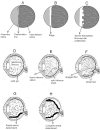Genetic susceptibility to advanced retinopathy of prematurity (ROP)
- PMID: 20738858
- PMCID: PMC2933676
- DOI: 10.1186/1423-0127-17-69
Genetic susceptibility to advanced retinopathy of prematurity (ROP)
Abstract
Retinopathy of prematurity (ROP) is a vascular vitreoretinopathy that affects infants with short gestational age and low birth-weight. The condition is a multifactorial disease and is clinically similar to familial exudative vitreoretinopathy (FEVR), which is a bilateral hereditary eye disorder affecting full-term infants. Both of them are characterized by the abnormal vessel growth in the vitreous that can lead to vitreoretinal traction, retinal detachment and other complications resulting in blindness. Despite the recent advances in diagnosis and treatment, ROP remains a major cause of childhood blindness in developed countries. The etiology of pathogenesis of advanced ROP is currently unknown. In the past, many causative factors such as length of time exposed to supplemental oxygen, excessive ambient light exposure and hypoxia have been suggested but evidence for these as independent risk factors in recent years is not compelling. It is not clear why ROP in a subset of infants with low birth-weight progresses to a severe stage (retinal detachment) despite timely intervention whereas in other infants with similar clinical characteristics ROP regresses spontaneously. Recent research with candidate gene approach, higher concordance rate in monozygotic twins and other clinical and experimental animal studies, suggest a strong genetic predisposition to ROP besides environmental factors such as prematurity. Three genes, which are involved in the Wnt signaling pathway, are mutated in both FEVR and in a small percentage of ROP disorder. However, none of the genetic factors identified thus far in ROP, account for a substantial number of patient population. Future studies involving genomics, bioinformatics and proteomics may provide a better understanding of the pathophysiology and management of ROP.
Figures



References
-
- Shastry BS. In: In retinal degeneration: causes, diagnosis and treatment. Catlin RB, editor. New York: Nova Science Publishers Inc; 2009. Molecular genetics of Norrie disease, familial exudative vitreoretinopathy and retinopathy of prematurity; pp. 89–106.
-
- Gilbert WS, Quinn GE, Dobson V, Reynolds J, Hard RJ, Palmer EA. Partial retinal detachment at 3 months after threshold retinopathy of prematurity. Arch Ophthalmol. 1996;114:1085–1091. - PubMed
Publication types
MeSH terms
Substances
LinkOut - more resources
Full Text Sources
Medical
Miscellaneous

